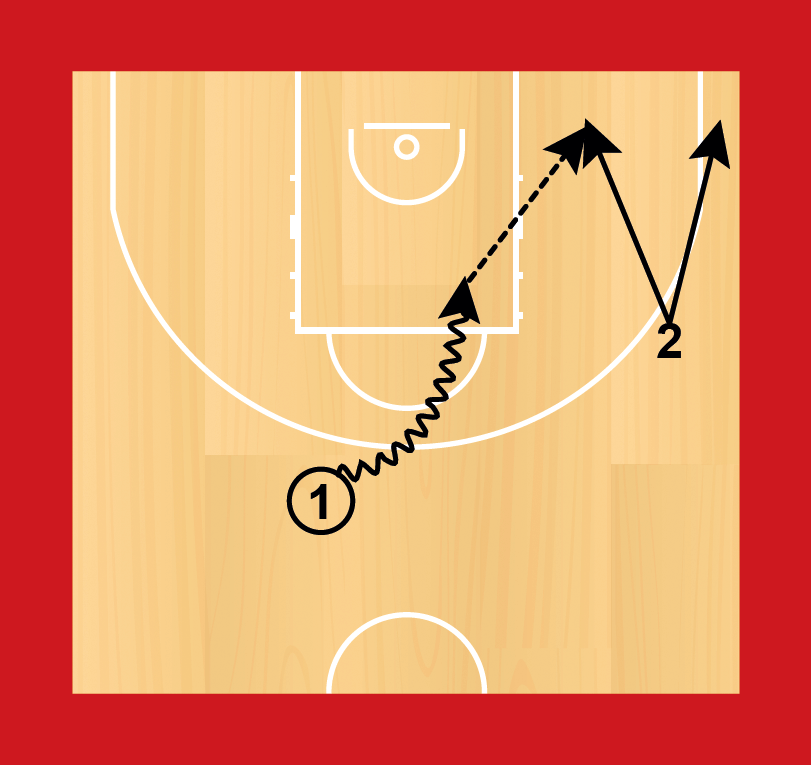- 2.5.1 Advanced lay-up techniques
- 2.5.2 Reverse lay-up
- 2.5.3 Advanced shooting - shooting footwork
- 2.5.4 Advanced shooting - inside shooting
- 2.5.5 Correcting shooting technique - flat shot
- 2.5.6 Correcting shooting technique - off-line shot
- 2.5.7 Correcting shooting technique - side spin
- 2.5.8 Correcting shooting technique - shooting short
- Follow-up
- 3.1.1 Preparing players physically to play basketball
- 3.1.2 Preparing players physically - warm-up for training
- 3.1.3 Preparing players physically - warm-up for games
- 3.1.4. Préparation physique des joueurs - Musculation de force
- 3.1.5 Preparing players physically - power training
- 3.1.6 Preparing players physically - conditioning
- 3.1.7 Preparing players physically - flexibility
- 3.1.8 Preparing players physically - basic strength training programme
- 3.1.9 Basic-off season preparation
- 3.3.1 Physical recovery techniques - overview
- 3.3.2 Physical recovery techniques - active recovery
- 3.3.3. Compression Clothing
- 3.3.4. Physical recovery techniques - hydro therapy
- 3.3.5. Physical recovery techniques - massage
- 3.3.6. Physical recovery techniques - sleep
- 3.3.7. Physical recovery techniques - stretching
- 3.3.8 Physical recovery techniques - practical applications
- 2.1.1 Motion Offence – 5 Out – pass and cut/give and go
- 2.1.2 Receivers Principles with Post Players
- 2.1.3 Motion offence with post - 4 out, 1 in
- 2.1.4 Post Up Cuts
- 2.1.5 Developing Decision Making - Putting Perimeter and Post Together
- 2.1.6 Creating scoring opportunities with a second pass
- 2.1.7 Moving the help defender away from a help position
- Follow-up
Level 2
2.5.3 Advanced shooting – shooting footwork
Initially, players should be instructed to be “balanced” before shooting and should be instructed how to use both a “jump” stop or “one count” – both feet landing at the same time and a “stride” stop or “two-count” – one foot lands and then the other. With a stride stop, players should be able to use either foot as their pivot foot.
Whichever footwork a player uses they should be instructed in the habit of catching the ball “in the air” – with both feet in the air. This should not be an exaggerated jump, however by catching the ball “in the air” the player will be able to:
- Correctly establish a pivot foot or have a choice of pivot foot if a jump stop is used;
- Generate greater power from the legs in the shot;
- Have a quicker “shot release” as they do not need to “dip” down to generate power.
This simple activity is a good way to practice “stride stop” shooting footwork. Players stand on the baseline with a ball and spin the ball to approximately the “low block”. They move after it, catch it with feet in the air and land in a stride stop.
The first foot to land should be the “inside foot” (closest to the basket) and:
- land on the heel and turn the foot to point at the basket;
- bend the knee to drop their weight down (and stop forward movement or over-rotation).
As the second foot lands the player should immediately jump into their shot. This is an explosive movement. By practicing on both sides of the basket the players will develop the skill to pivot on either foot.
An activity to practice “jump stop” footwork is to have the shooter start at the wing. As their team mate dribbles into the key, the shooter moves sideways to their shooting position. As the pass is thrown to them they jump-slightly forward, catch the ball in the air and as they land they immediately shoot.
The player should move to a position that is within their shooting range.
Players also need to be able to shoot off the dribble. When they dribble in the opposite direction of their pivot foot, they should be able to shoot with only one dribble.
Here the right foot is the pivot foot so the players takes the first step with their left foot. As this foot lands, the dribble should also hit the floor. After the dribble the player catches the ball (with feet in the air) and either stops in a stride stop (shown) or jump stop to shoot.
If the player dribbles in the direction of their pivot foot, they may need to take two dribbles, because their first step is across their body. Again, here is shown a stride stop.





